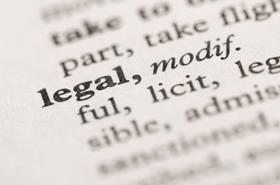In the third of our series on the legal considerations of constructing skyscrapers, Louise Popple considers intellectual property rights in iconic buildings


The London skyline has altered hugely in the past 20 years. With this have come new opportunities for commercialising iconic buildings. Increasingly, stakeholders are seeing the potential to exploit not only the space their buildings provide but also the visual identity and branding surrounding them. Doing so enhances the intrinsic pull of the building as well as creating merchandising and licensing opportunities. Various intellectual property rights can be used to protect the uniqueness and distinctive value of iconic buildings – failing to secure such protection is like leaving the doors unlocked.
Copyright
Copyright subsists in any original work. To be original, the work must represent the author’s own intellectual creation. This is a relatively low bar and there is no need for artistic merit. Functional elements, however, are not protected. Copyright can subsist in a number of aspects of a building, including drawings, diagrams, maps, CGI, charts, models and plans (all “artistic works”) as well as written specifications (“literary works”). It will also cover the completed building itself, as well as logos on the building.
Copyright is an automatic right, arising on creation of the work, and is long lasting – the life of the creator plus 70 years. It prevents anyone from copying a “substantial part” of the work, which is assessed qualitatively not quantitatively. It covers the making of a 3D copy of a 2D work and vice versa, as well as the making of adaptations. This ability to prevent copying is fundamental to maintaining a building’s uniqueness and therefore its value.
Copyright is owned by the person who created the work (except where it is assigned or produced by an employee in the course of their employment). This applies even where the creator is contracted to produce the work (although the client may have an implied licence to use the work for the purposes envisaged without infringing copyright). In practice, copyright in a building is usually owned by the architect. Engineers, interior designers and subcontractors might also own copyright in elements of it.
Under most standard contracts, the architect retains the copyright but licenses its client to use it for limited purposes. The purposes permitted and the conditions under which the licence comes into existence should be carefully considered by building owners and developers – particularly if they wish to exploit the visual identity of the building and/or prevent others from doing so.
Likewise, before purchasing a site with planning permission, the purchaser should consider whether the seller has the power to transfer the right to use the copyright in the plans to it. If it does not – for example, because it does not have the benefit of the contract with the architect – then construction of the building to the plans by the purchaser will infringe copyright.
There are a number of important defences to copyright infringement, including incidental inclusion of the work. There is also a specific “freedom of panorama” defence in the UK. On the face of it, this permits such things as making and selling photographs and graphic works of buildings. However, the scope of the defence is unclear and care should be taken before relying on it. It should also be remembered that not all EU member states offer such a defence and some limit it to non-commercial use.
Trade marks
Trade marks protect distinctive words, designs and other signs that identify goods or services as coming from one undertaking or another. Trade mark registration can be used to protect the names (including nicknames) as well as visual representations (2D and 3D) of buildings. A number of iconic buildings are protected in this way. For example, the name and image of Battersea Power Station is protected as an EU trade mark for a range of goods and services including keyrings, clothing and games. The layout of spaces within buildings might also be protectable as trade marks, Apple having obtained such protection for the layout of its stores.
Trade mark registration gives protection different from that available under copyright law and both forms of protection should be considered. There is no freedom of panorama defence available under trade mark law and so those who wish to reproduce the image of a building should consider whether any relevant trade marks exist. Honest descriptive use of a mark is, however, permissible. Again, building owners and developers should ensure they have the right to use and apply for a particular trade mark over the architect or others involved in the building’s branding.
Designs
Registered and unregistered community and UK designs can also be used to protect some aspects of buildings – such as their shapes and surface decoration – if they are novel and have individual character. The UK unregistered design right is potentially also available to protect functional aspects of buildings.
Louise Popple is a senior professional support lawyer in the intellectual property and media group at Taylor Wessing




























No comments yet